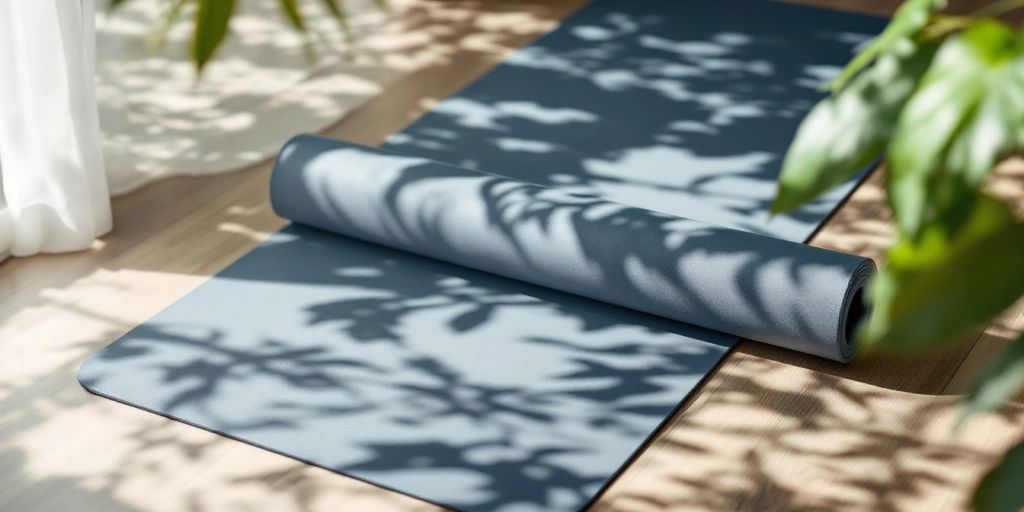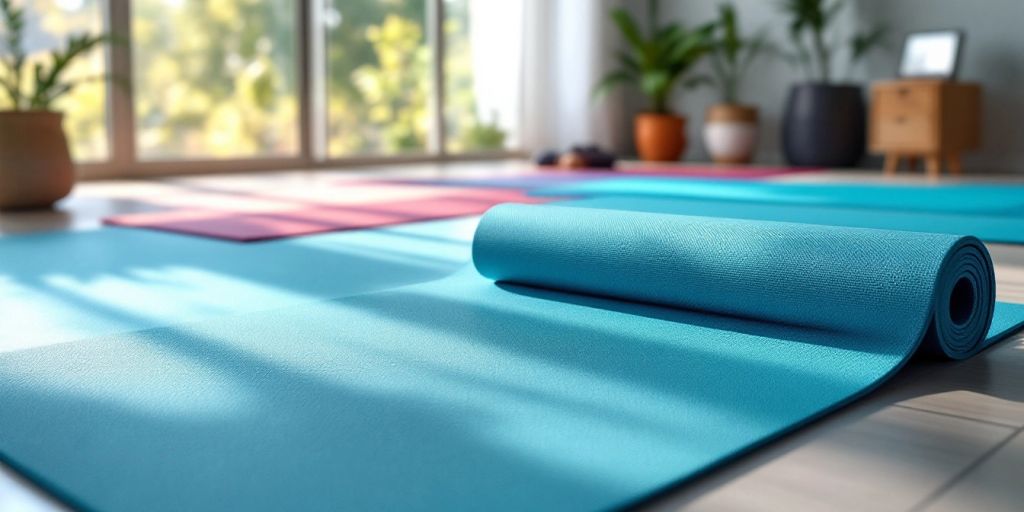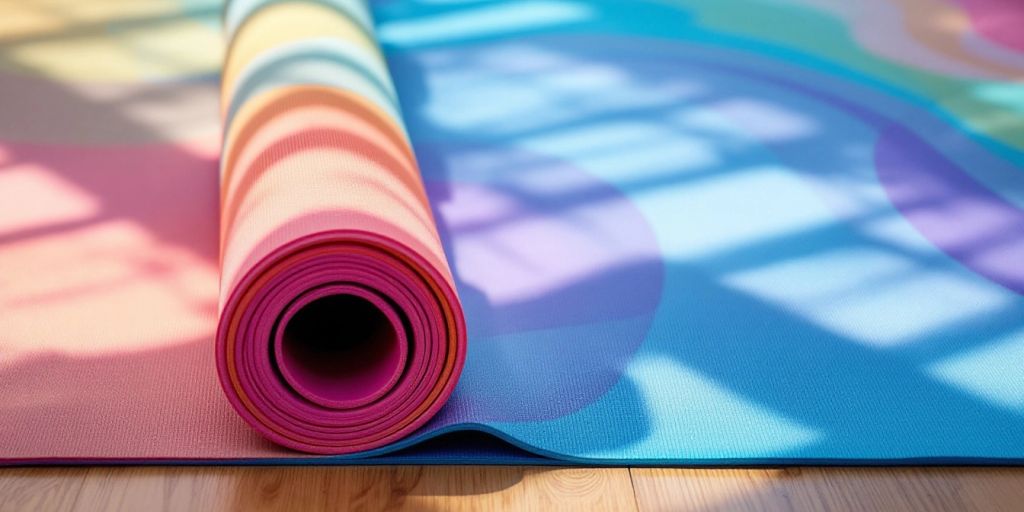
Discover the Best Non Toxic Yoga Mat on Amazon for a Greener Practice
Yoga is not just about physical exercise; it's also about creating a healthy environment for your practice. Choosing a non-toxic yoga mat is an essential step toward ensuring a safe and eco-friendly experience. In this article, we'll explore the best non-toxic yoga mats available on Amazon, focusing on their materials, features, and benefits for both your health and the planet.
Key Takeaways
- Non-toxic yoga mats are safer for your health and the environment.
- Materials like natural rubber, cork, and organic cotton are great choices.
- Look for mats that provide good grip and durability.
- Popular options include the Manduka eKO Lite and Jade Yoga Harmony mats.
- Caring for your mat properly can extend its life and maintain its quality.
Understanding the Importance of Non-Toxic Yoga Mats
Yoga is not just about physical exercise; it’s also about creating a peaceful mind and body connection. Choosing the best non-toxic yoga mat for a healthier practice is essential for both your health and the environment. Non-toxic yoga mats are made from natural materials like rubber, cotton, and jute, which are hypoallergenic and durable. Here are some key reasons to consider non-toxic mats:
Health Benefits of Non-Toxic Materials
- Reduced Exposure to Chemicals: Non-toxic mats minimize your exposure to harmful substances found in traditional mats.
- Hypoallergenic Properties: Natural materials are less likely to cause allergic reactions.
- Better for Your Skin: Non-toxic mats are free from harsh chemicals that can irritate your skin.
Environmental Impact of Traditional Mats
- Pollution: Many traditional mats are made from synthetic materials that contribute to pollution during production.
- Waste: Synthetic mats often end up in landfills, where they take years to decompose.
- Resource Depletion: The production of synthetic materials often relies on fossil fuels, which are non-renewable resources.
Why Choose Non-Toxic Mats
- Sustainability: Non-toxic mats are made from renewable resources, making them a better choice for the planet.
- Durability: Natural materials tend to last longer, reducing the need for frequent replacements.
- Mindfulness: Practicing on a non-toxic mat can enhance your yoga experience by promoting a healthier environment.
Embracing non-toxic yoga mats not only supports your health but also contributes to a greener planet. By making this choice, you are taking a step towards a more sustainable lifestyle.
Top Non-Toxic Yoga Mat Materials to Consider
When it comes to choosing a yoga mat, the materials used can make a big difference in both your health and the environment. Here are some of the best non-toxic materials to consider:
Natural Rubber: A Sustainable Choice
Natural rubber is a popular choice for yoga mats due to its excellent grip and durability. It is made from the sap of rubber trees, making it a renewable resource. Here are some key points about natural rubber mats:
- Eco-Friendly: Sourced from sustainable rubber trees.
- Non-Toxic: Free from harmful chemicals found in synthetic mats.
- Comfortable: Provides good cushioning for your joints.
Cork: Eco-Friendly and Durable
Cork is another fantastic option for yoga mats. It is harvested from the bark of cork oak trees, which can regenerate, making it a sustainable choice. Here’s what you should know about cork mats:
- Natural Antimicrobial Properties: Helps resist mold and bacteria.
- Non-Slip Surface: Stays grippy even when wet, perfect for hot yoga.
- Lightweight: Easy to carry to and from your yoga sessions.
Organic Cotton and Wool Options
For those who prefer a softer feel, organic cotton and wool mats are great alternatives. They are made from natural fibers and are often free from harmful dyes and chemicals. Consider these benefits:
- Soft and Comfortable: Gentle on the skin, ideal for restorative practices.
- Biodegradable: Breaks down naturally at the end of its life cycle.
- Versatile: Can be used for various types of yoga and meditation.
Choosing a non-toxic yoga mat not only benefits your health but also supports a healthier planet. Opt for materials that are sustainable and free from harmful chemicals to enhance your yoga practice while being kind to the environment.
In summary, when selecting a yoga mat, consider materials like natural rubber, cork, and organic cotton or wool. Each offers unique benefits that contribute to a safer and more eco-friendly practice. Always look for mats that prioritize sustainability and non-toxicity to ensure a greener yoga experience.
Features to Look for in a Non-Toxic Yoga Mat

When choosing a non-toxic yoga mat, there are several important features to consider to ensure a safe and enjoyable practice. Here are the key aspects:
Grip and Stability
- Non-slip surface: Look for mats with a textured surface to prevent slipping during poses.
- Material choice: Natural rubber and cork are excellent for grip.
- Thickness: A thicker mat can provide more cushioning and stability.
Durability and Longevity
- Material quality: Choose mats made from high-quality, sustainable materials like natural rubber or cork.
- Resistance to wear: Check for mats that resist tearing and wear over time.
- Maintenance: Some materials are easier to clean and maintain than others.
Portability and Weight
- Lightweight design: If you travel or go to classes, a lightweight mat is easier to carry.
- Compact size: Look for mats that can roll up easily and fit in your bag.
- Carrying options: Some mats come with straps or bags for easy transport.
Choosing the right features in a non-toxic yoga mat can enhance your practice and support a healthier lifestyle.
In summary, when selecting a non-toxic yoga mat, prioritize grip, durability, and portability to ensure a safe and enjoyable yoga experience. For example, the oak trekk travel mat is a great option as it is lightweight, eco-friendly, and designed for versatility, making it perfect for various environments.
Popular Non-Toxic Yoga Mats Available on Amazon
When it comes to practicing yoga, having the right mat can make a big difference. Here are some of the best non-toxic yoga mats you can find on Amazon:
Manduka eKO Lite Yoga Mat
- Eco-friendly: Made from biodegradable natural rubber.
- Thickness: 4mm for comfort and support.
- Weight: 2.2 kg, making it easy to carry.
- Dimensions: 68 x 24 inches.
Jade Yoga Harmony Mat
- Material: Made from natural rubber, providing excellent grip.
- Thickness: 5mm for added cushioning.
- Weight: 2.5 kg, suitable for regular use.
- Dimensions: 74 x 24 inches.
Yoloha Native Cork Yoga Mat
- Unique Feature: The top layer is made from cork, which is eco-friendly and provides a great grip.
- Thickness: 5mm, ensuring comfort during practice.
- Weight: 2.3 kg, lightweight for easy transport.
- Dimensions: 72 x 24 inches.
| Yoga Mat | Material | Thickness | Weight | Dimensions |
|---|---|---|---|---|
| Manduka eKO Lite | Natural Rubber | 4mm | 2.2 kg | 68 x 24 inches |
| Jade Yoga Harmony | Natural Rubber | 5mm | 2.5 kg | 74 x 24 inches |
| Yoloha Native Cork | Cork | 5mm | 2.3 kg | 72 x 24 inches |
Choosing a non-toxic yoga mat is essential for a healthier practice. It not only benefits your body but also helps the environment.
These mats are designed to provide comfort and stability while ensuring that you are practicing on materials that are safe for both you and the planet. Each option has unique features that cater to different preferences, making it easier to find the perfect mat for your yoga journey.
How to Maintain and Care for Your Non-Toxic Yoga Mat
Taking care of your non-toxic yoga mat is essential for its longevity and performance. Here are some tips to keep it in great shape:
Cleaning Tips for Different Materials
- Natural Rubber: Wipe with a damp cloth and mild soap. Avoid soaking.
- Cork: Use a soft cloth with a gentle cleaner to maintain its surface.
- Cotton/Wool: Machine wash on a gentle cycle, but air dry to prevent shrinkage.
Storage Solutions for Longevity
- Roll it Up: Always roll your mat instead of folding it to prevent creases.
- Keep it Dry: Store in a cool, dry place away from direct sunlight.
- Use a Mat Bag: A bag can protect it from dust and damage.
When to Replace Your Yoga Mat
- If you notice significant wear and tear.
- If it starts to smell bad despite cleaning.
- If it no longer provides adequate grip.
Regular maintenance is key to ensuring your mat remains safe and effective for your practice.
By following these simple steps, you can enjoy a cleaner, safer, and longer-lasting yoga mat that supports your eco-friendly lifestyle!
Customer Reviews and Ratings of Non-Toxic Yoga Mats on Amazon

Understanding Amazon Ratings
When shopping for non-toxic yoga mats on Amazon, customer reviews and ratings can provide valuable insights. Here’s how to interpret them:
- Star Ratings: A higher star rating generally indicates better customer satisfaction.
- Number of Reviews: A product with many reviews is often more reliable than one with just a few.
- Detailed Feedback: Look for reviews that mention specific features like grip, comfort, and durability.
Common Praises and Complaints
Many customers share their experiences with non-toxic yoga mats. Here are some common themes:
- Positive Feedback:
- Comfortable and soft on the skin.
- Eco-friendly materials that are free from harmful chemicals.
- Good grip and stability during practice.
- Negative Feedback:
- Some mats may not provide enough grip, leading to slips.
- A few customers report durability issues after extended use.
- Higher price points compared to traditional mats.
How to Choose Based on Reviews
To select the best non-toxic yoga mat for your needs, consider the following steps:
- Read Multiple Reviews: Look for patterns in feedback across different customers.
- Check for Verified Purchases: Reviews from verified buyers are often more trustworthy.
- Consider Your Practice Style: Choose a mat that suits your specific yoga style, whether it’s gentle or vigorous.
Remember, the right yoga mat can enhance your practice and contribute to a healthier environment. Look for mats that are made from natural materials like rubber or cork, which are not only better for you but also for the planet.
In summary, customer reviews on Amazon can guide you in finding the perfect non-toxic yoga mat. Pay attention to both praises and complaints to make an informed decision.
The Future of Eco-Friendly Yoga Practices
As we look ahead, the world of yoga is evolving to embrace more sustainable practices. The future of yoga is not just about the poses; it’s about how we can make our practice better for our health and the planet. Here are some key areas to consider:
Innovations in Yoga Mat Materials
- Biodegradable options: New materials are being developed that break down naturally, reducing waste.
- Recycled materials: Many brands are now using recycled plastics and other materials to create mats.
- Natural fibers: Mats made from jute, hemp, and other natural fibers are gaining popularity for their eco-friendliness.
The Role of Consumers in Driving Change
- Demand for transparency: Consumers are increasingly asking brands about their sourcing and manufacturing processes.
- Support for sustainable brands: Choosing to buy from companies that prioritize sustainability can influence market trends.
- Community engagement: Joining local eco-friendly yoga groups can help spread awareness and encourage others to make greener choices.
Benefits of a Greener Yoga Practice
- Healthier environment: Using non-toxic mats contributes to cleaner air and less pollution.
- Personal well-being: Practicing on eco-friendly mats can enhance your connection to nature and improve your mental health.
- Community impact: Supporting sustainable practices helps build a community focused on health and environmental responsibility.
The future of yoga is bright, with a strong focus on personalization, accessibility, and connection. By choosing eco-friendly options, we can all contribute to a healthier planet while enjoying our practice.
Final Thoughts on Eco-Friendly Yoga Mats
Choosing a non-toxic yoga mat is an important step towards a healthier yoga practice and a cleaner planet. The ten mats we've discussed provide a range of options, materials, and prices, so there's something for everyone. By picking one of these eco-friendly mats, you not only improve your yoga experience but also help lessen your impact on the environment. Remember, every small choice matters when it comes to creating a greener future. Enjoy your yoga journey with a mat that cares for both your practice and the Earth.
Frequently Asked Questions
What are non-toxic yoga mats made of?
Non-toxic yoga mats are made from safe materials like natural rubber, cork, cotton, and wool. These materials do not release harmful chemicals.
Why should I choose a non-toxic yoga mat?
Choosing a non-toxic yoga mat is better for your health and the environment. They don't have harmful substances that can affect your body or the planet.
How do I clean my non-toxic yoga mat?
You can clean your non-toxic yoga mat with a mix of water and mild soap. Wipe it down with a cloth and let it air dry.
Are non-toxic yoga mats more expensive?
Non-toxic yoga mats can be a bit more expensive than regular mats, but they are worth it for their safety and durability.
How long do non-toxic yoga mats last?
With proper care, non-toxic yoga mats can last several years. Their lifespan depends on how often you use and clean them.
Can I use a non-toxic yoga mat for hot yoga?
Yes, many non-toxic yoga mats are designed to handle sweat and provide good grip, making them suitable for hot yoga.


